In 1271 when Marco Polo left Venice at the start of his journey to the land of the Kublai Khan, there was another Marco that traveled with the expedition.
SIEGE WEAPONS
The only positive thing one can say about warfare, is the rapid advance and improvement in technology during hostilities, provided these innovations are passed on to peace-time engineering.
Researching Mongol history for my book, The Other Marco, I came across the siege of Xiangyang, a huge fortressed city in southern China. History tells us that the Genghis Khan conquered northern China and his grandson Kublai Khan eventually overran the southern Song dynasty. One of the hardest nuts to crack was the massive walls of Xiangyang. Kublai Khan therefore acquired the expertise of two Persians, Ismail and Al al-Din to build rock hurling siege machines to break this barrier. These engineers improved on an older design and surrounded the city with 20 of these new weapons that could toss a projectile of 300 kg from a distance of 500 meters. The strongest fortress in southern China fell quickly, which opened the door to the rest of the country, thanks to this new technology.
Let’s have a look at these rock-lobbing monsters.
Machines that flung projectiles [mostly rocks] appeared hundreds of years earlier in China itself and during Roman times. These prototypes were possibly more dangerous to the soldiers loading and firing them than for the enemy. During the middle ages there seemed to be a resurgence of siege weapons, perhaps because more castles were being built at the time. Needless to say, the more siege machines being built the quicker new ideas improved the design.
I will not dwell on the older machines but will look at the Mangonel firstly as the fore runner of the Trebuchet.
MANGONEL
All siege machines have a heavy wooden framework to contain the arm that flings the projectile. This arm is powered in three different ways, tension, torsion or gravity. Earlier Mangonels [or Onager] used the ‘tension’ method. Bending a thin piece of wood with one’s hands [putting it under tension] and then flicking a small pebble from the open end is how it worked, only much bigger, of course.
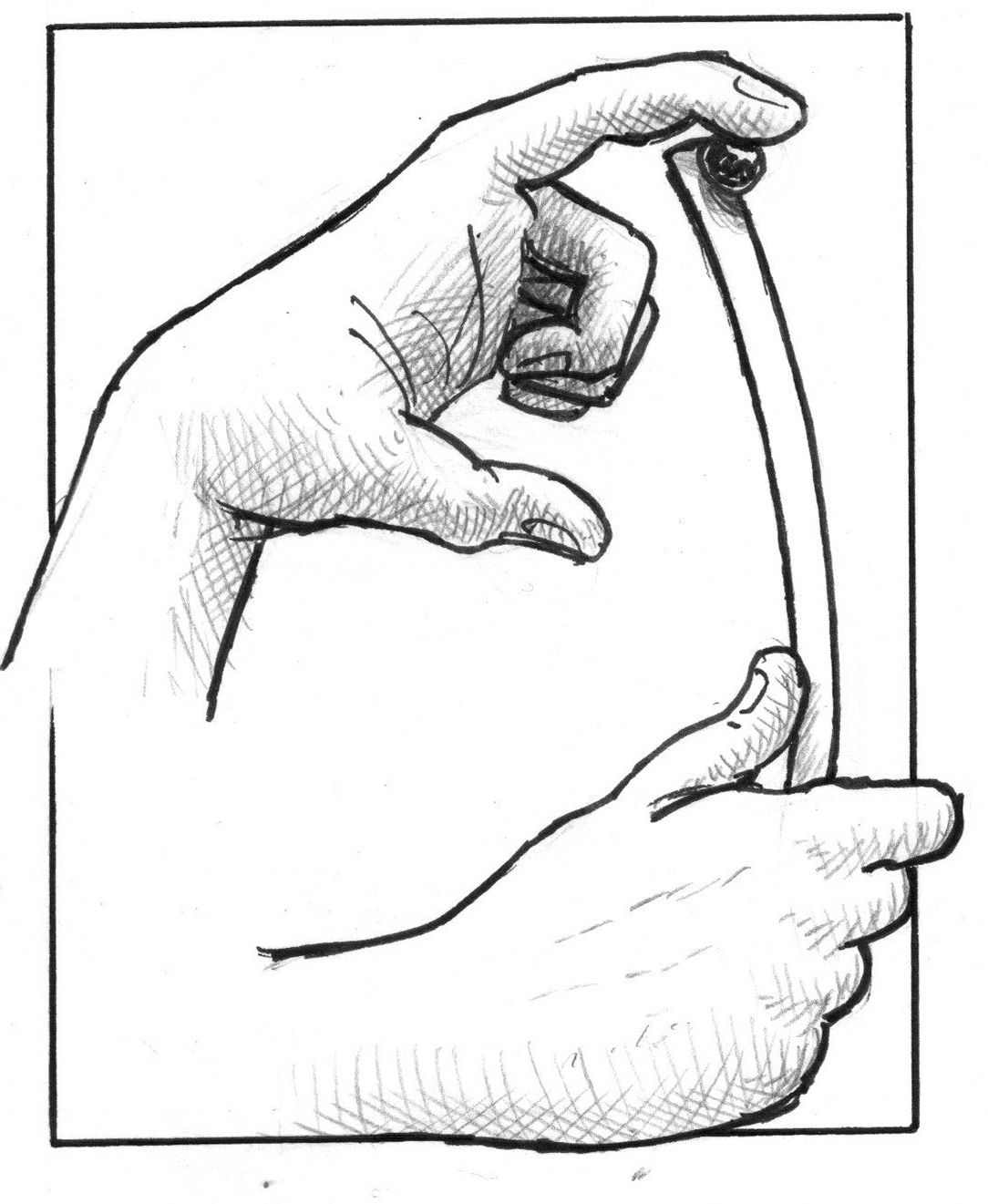 The piece of wood is in tension
The piece of wood is in tension
Another version of the older Mangonels was to have a huge crossbow adding to the tension by attaching the bow string to the launching arm so that when this arm was loaded [bent back] the crossbow was loaded at the same time [adding more tension]. In spite of doubling the power, it was not always strong enough to breach castle walls. This called for a new method for storing energy that the launching arm could harness. It was eventually found by twisting ropes and sinews around the base of the arm to form a torsion bundle.
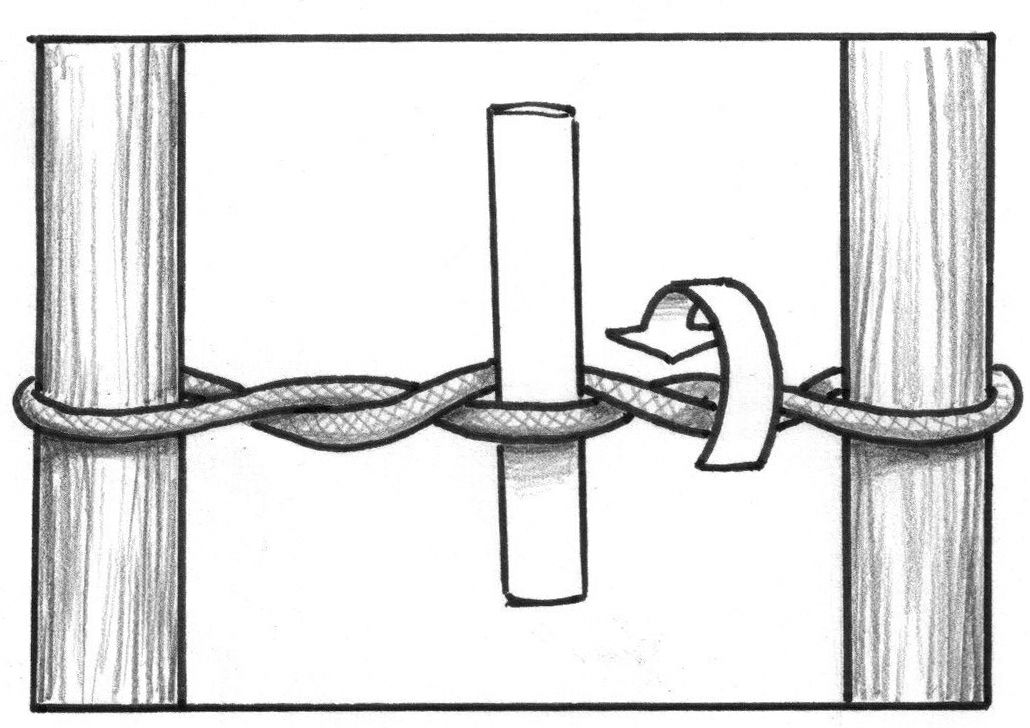
Torsion [twisting] builds energy in the winding.
A MANGONEL SIEGE MACHINE
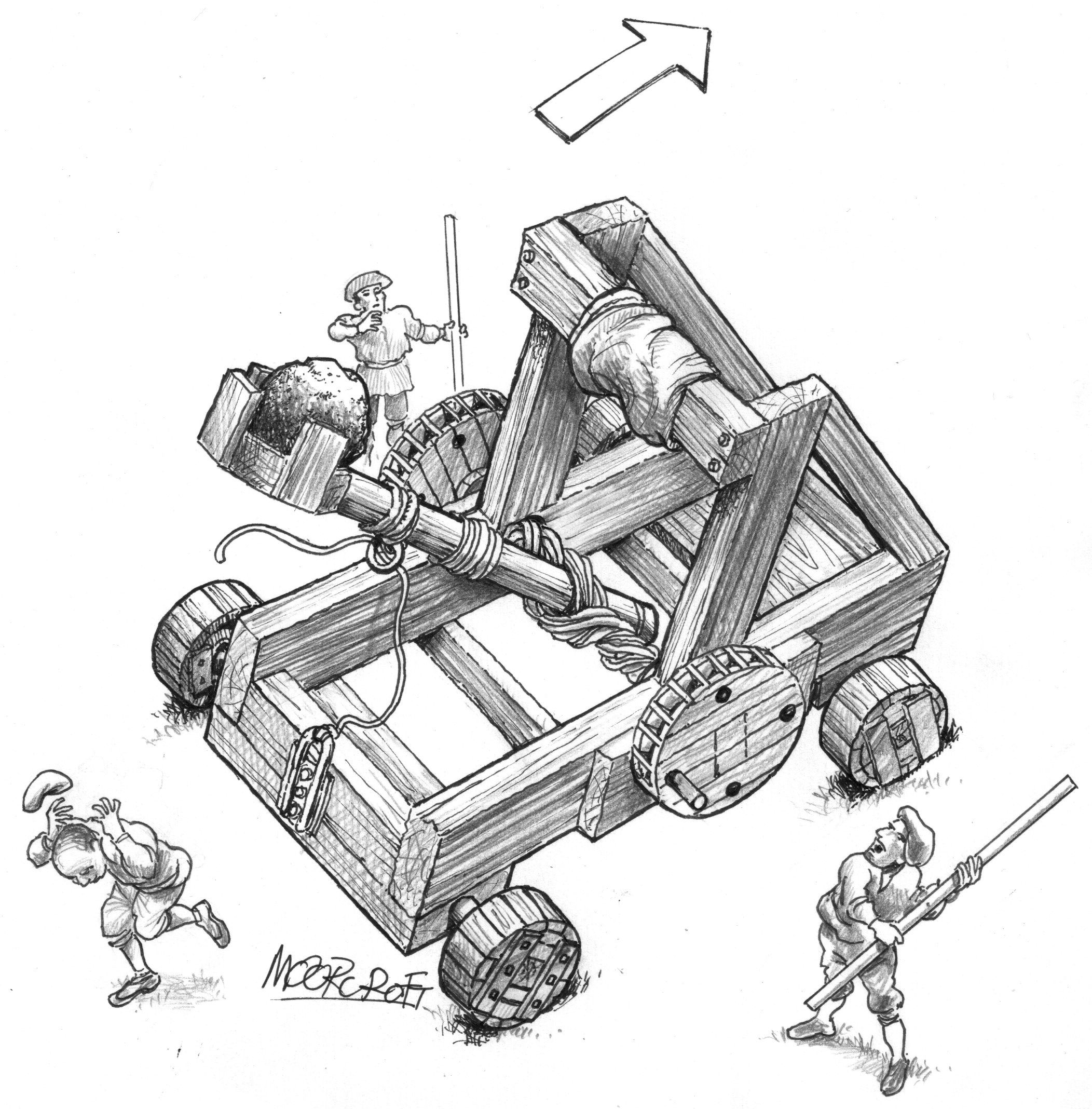
Notice the twisted cordage at the bottom of the launching arm and the slotted wheels on either side that are used to tighten the bundle by inserting poles into the slots and turning. There is also a pin jutting out that must be inserted into one of the four ‘braking’ holes on the side of the wheel to stop the twisting unravelling itself before the rock is thrown. This is a very simplified drawing of a working Mangonel as I have not shown the complex tackle used to lower the arm back down to the firing position, nor have I shown the trigger method for holding down the load and letting go when the command to “Fire!” is given. No single man could hang onto the rope as I have drawn – I am simply having a bit of fun!
Mangonels were not very energy efficient, as too much of the stored energy in the twisted bundle is used directly in moving and lifting the weight of the launching arm. The projectile uses whatever energy is left to break the wall. Another drawback of the Mangonel’s launching system is that the arm has to be stopped at full speed against a padded framework which surely damages not only the contact areas, but the whole structure through continual vibration. I wonder how long the average Mangonel lasted before being rebuilt.
Some machines had wooden wheels but would be more stable without them during operation.
A TREBUCHET SIEGE MACHINE
The design of the Trebuchet is quite ingenious. It also has a launching arm to fling the projectile by means of a falling counter-weight to produce the required energy through gravity. The launching arm is pivoted to one side where the hinged weight is attached. This causes the end of the long side to move through a greater arc increasing it’s velocity. A sling holding the projectile is attached to this fast moving end. Because the sling is free moving, it swings out through centrifugal force to its full length, scribing an even greater and faster moving arc that flies high over the machine. At this point, a simple angled pin allows the one side of the sling to slip off and free the payload to fly at, or most times over the walls and into the castle.
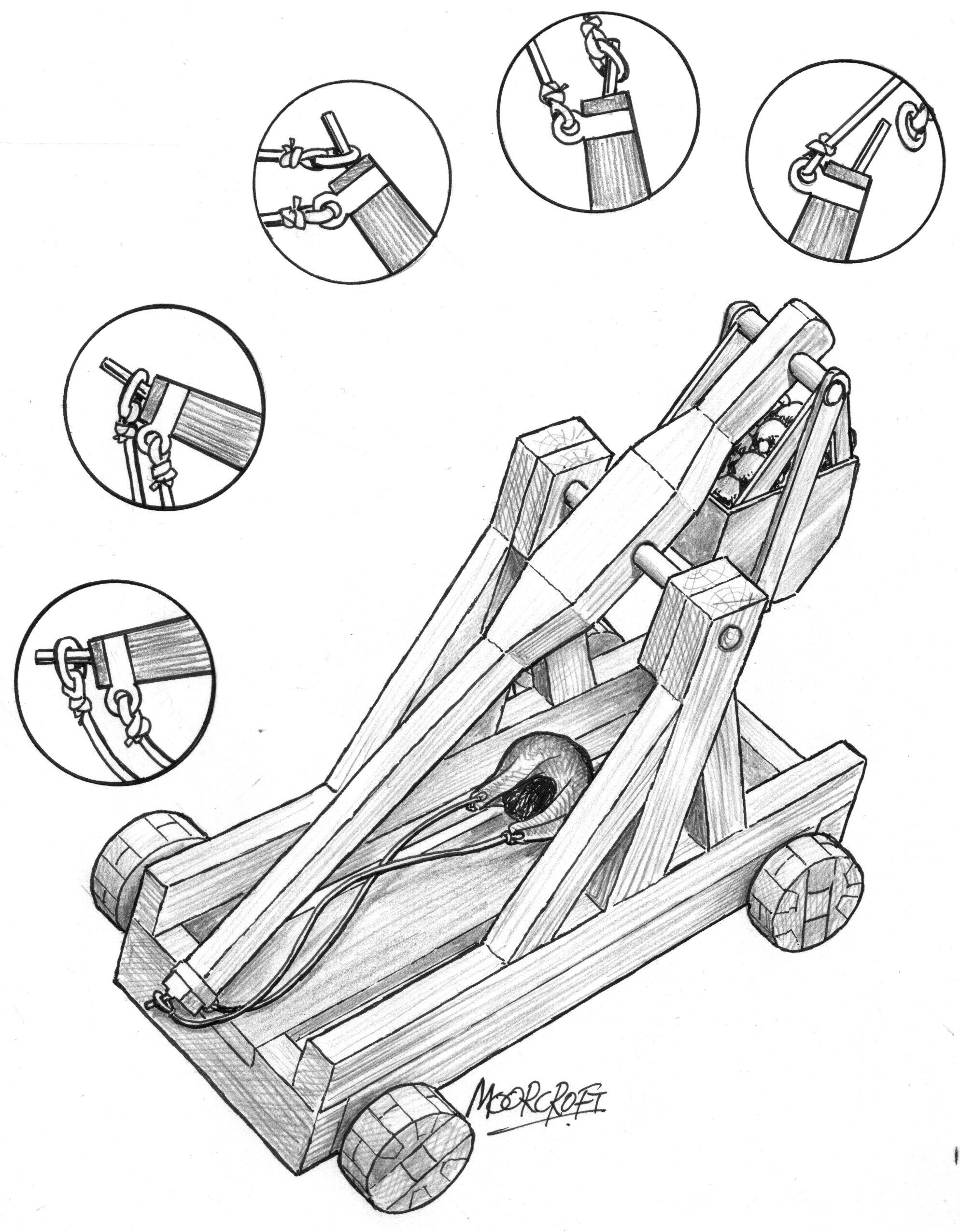
It was this release mechanism that intrigued me most, and that is why I have drawn it here. It is so simple and yet so brilliant! [Again I have not included in the illustration, any of the ropes used to retrieve the arm or lift the weighted bucket, neither the holding down trigger mechanism as I felt it would complicate the picture unnecessarily.] Let us not forget how the power was increased through velocity by moving the business end out as far from the pivotal point as possible. This is nothing short of sheer brilliance as well. Small wonder the fortresses of the southern Song dynasty crumbled before the invading Mongols.
Siege machines were eventually superseded by gunpowder and canons. The only ones still found today are scaled down models built by enthusiasts who compete against each other at staged competitions. Sounds like fun!

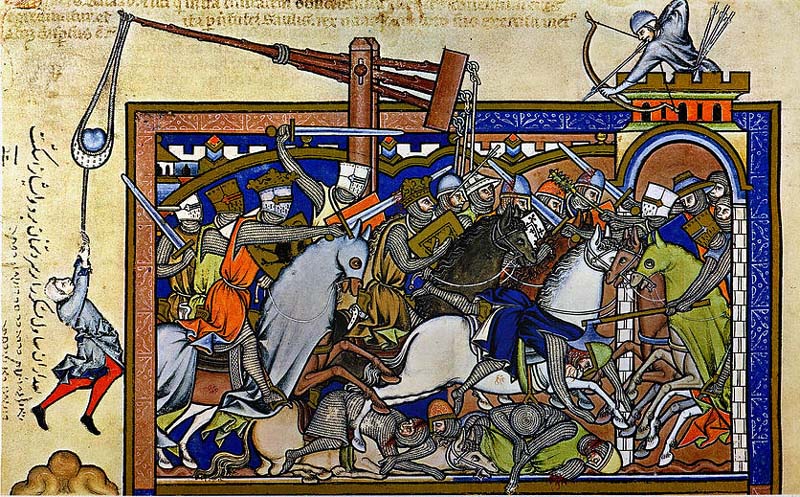
My deepest appreciation for the tremendous value I’ve gained from this website. Your dedication to sharing information is greatly appreciated. The information provided is not only accurate but also presented in an engaging and accessible manner. I’m grateful for the dedication to providing high-quality information that truly makes a difference. Thankies ID : CMT-762FKVJBEXET3FM9YR
Hello Islam Berkemajuan,
Thank you for taking the time to contact me and thank you also for your very positive comments about my blog content.
I have lately been very cautious about responding to comments as there seems to be so much spam infiltrating the genuine commentators.
I have not posted anything new on my blog for more than a year or two, but if I can get more responses like yours, it will encourage me to continue as there is so much more that I would like to write about.
thank you once again
TOM